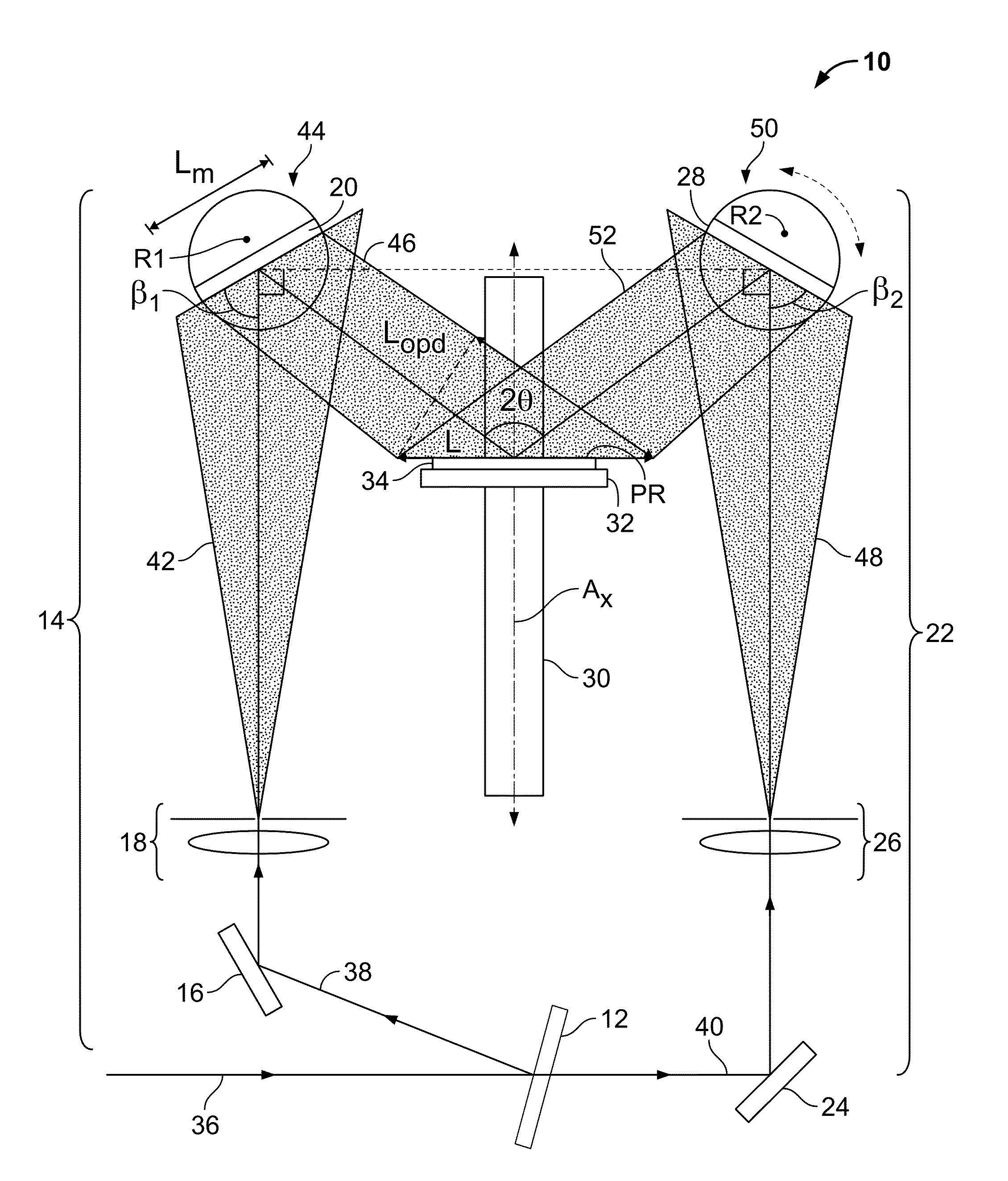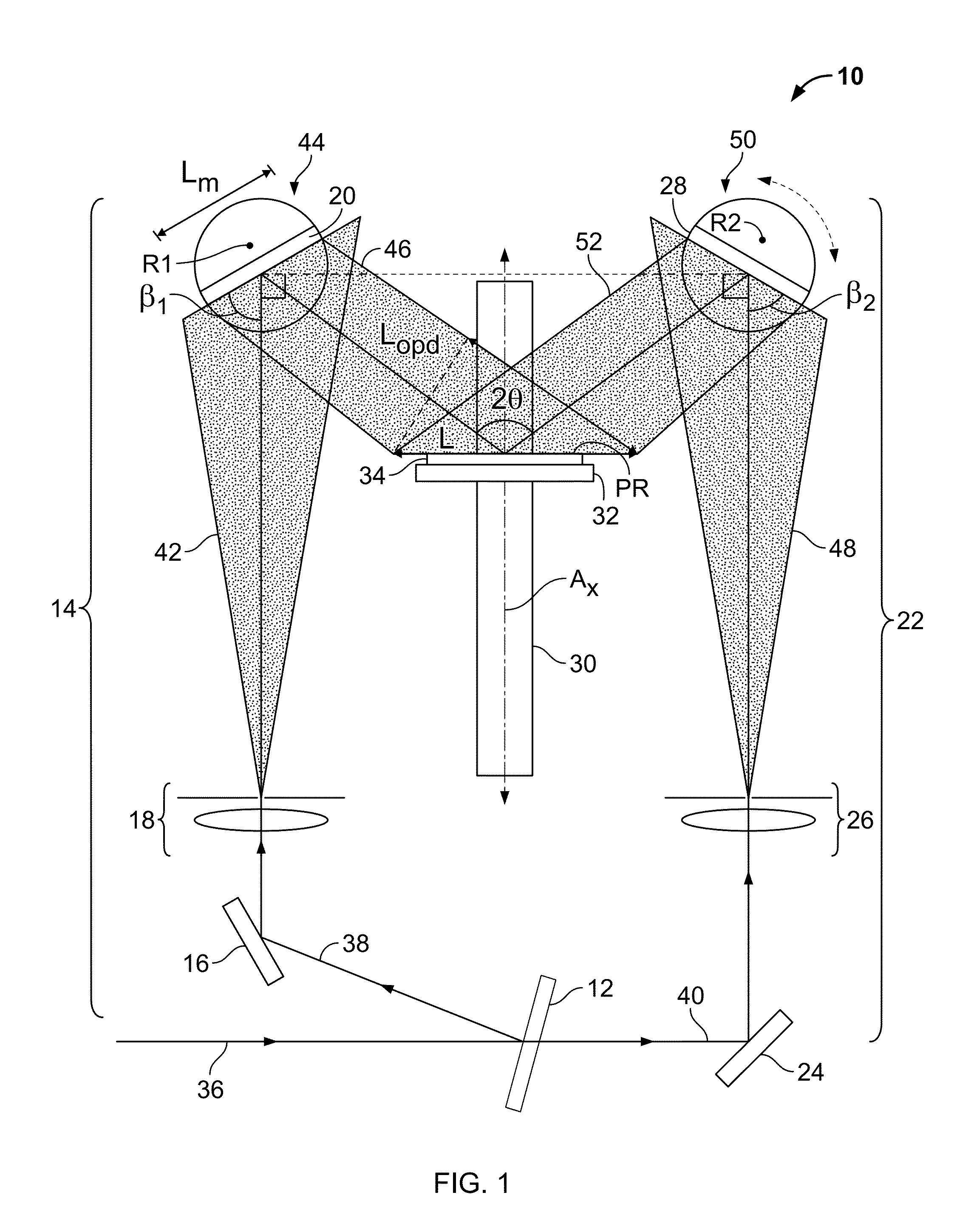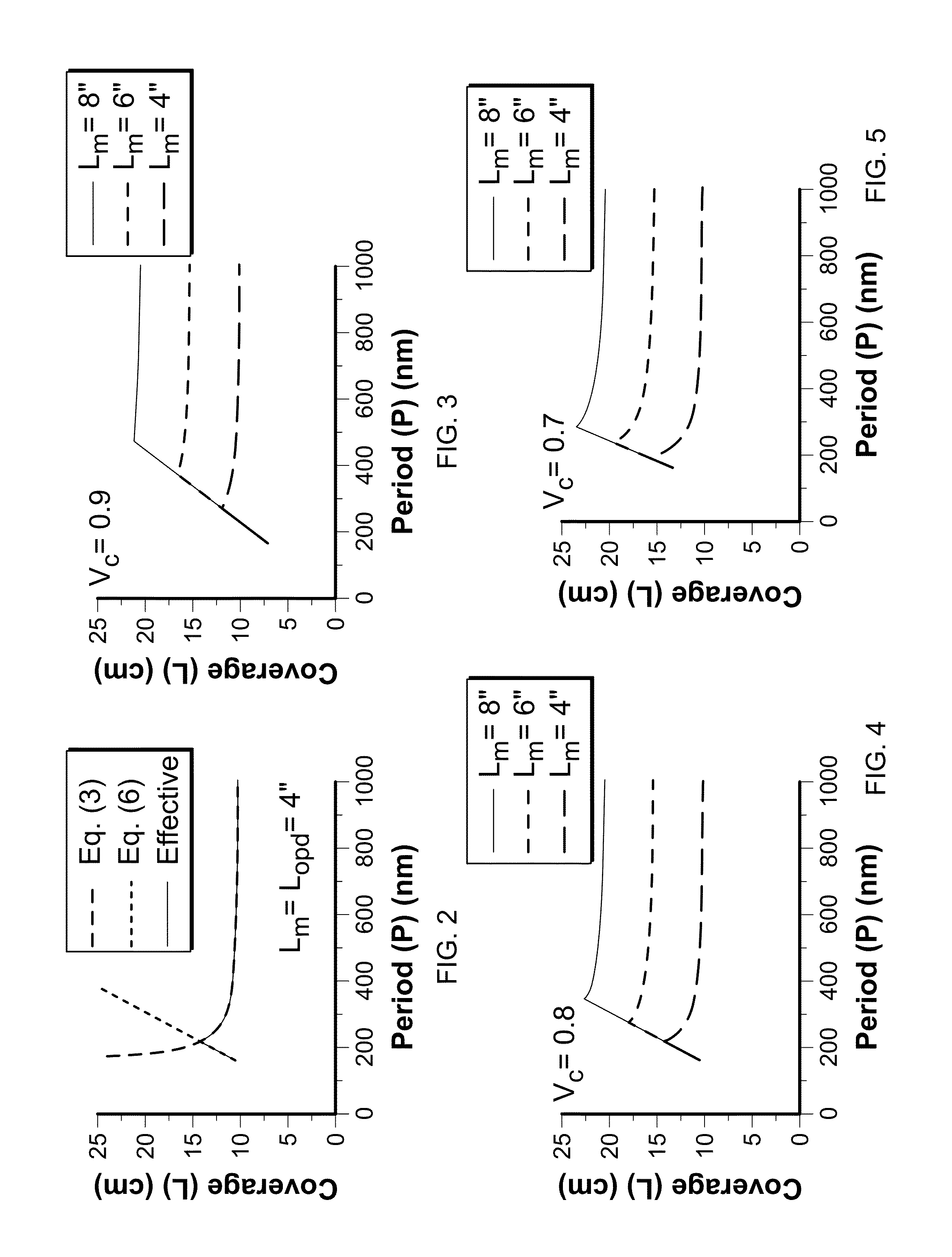Tunable two-mirror interference lithography system
a lithography system and mirror technology, applied in the field of optical lithography systems, can solve the problems of laborious realignment of the entire optical path, difficult to tune the pattern periodicity, and high-power lasers that are costly, and achieve the effect of convenient regulation and uniform pattern periodicities
- Summary
- Abstract
- Description
- Claims
- Application Information
AI Technical Summary
Benefits of technology
Problems solved by technology
Method used
Image
Examples
example
[0029]To experimentally demonstrate the performance of the exemplary interference lithography system 10 of FIG. 1, and predicted performance of such as system 10 as discussed with respect to FIGS. 2-5, 1-D interference nano-grating patterns of various periodicities were fabricated on 4-inch silicon substrates using a 50 mW HeCd laser (Kimmon Electric US, LP, Centennial Colo.) of λ=325 nm and σ=425 Mhz (coherence length of ˜30 cm) and two 4-inch rotating mirrors. FIGS. 6 and 7 are photographs of the experimental interference lithography system that was used. This experimental system is a significantly simplified embodiment of the interference lithography system of the present invention, but included a sufficient number of components to demonstrate the performance of other embodiments of the invention. The components of FIGS. 6 and 7 are referenced by the same reference numbers used to indicate the schematic representation of those components in FIG. 1, with additional reference numbe...
PUM
| Property | Measurement | Unit |
|---|---|---|
| frequency | aaaaa | aaaaa |
| angle | aaaaa | aaaaa |
| photosensitive | aaaaa | aaaaa |
Abstract
Description
Claims
Application Information
 Login to View More
Login to View More - R&D
- Intellectual Property
- Life Sciences
- Materials
- Tech Scout
- Unparalleled Data Quality
- Higher Quality Content
- 60% Fewer Hallucinations
Browse by: Latest US Patents, China's latest patents, Technical Efficacy Thesaurus, Application Domain, Technology Topic, Popular Technical Reports.
© 2025 PatSnap. All rights reserved.Legal|Privacy policy|Modern Slavery Act Transparency Statement|Sitemap|About US| Contact US: help@patsnap.com



